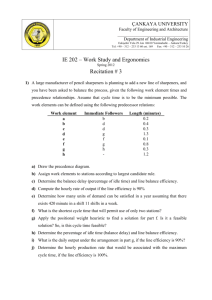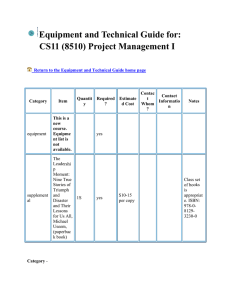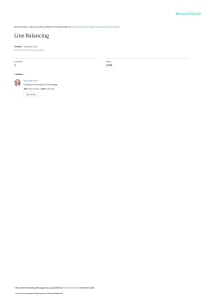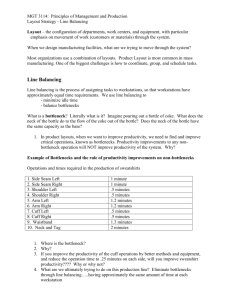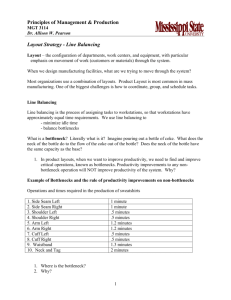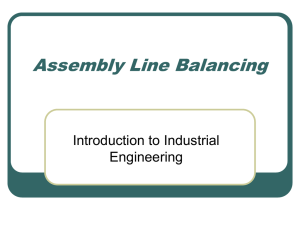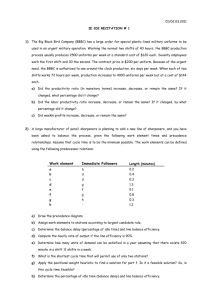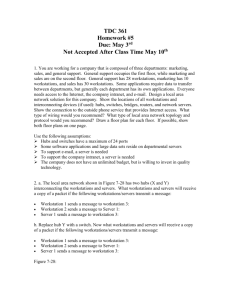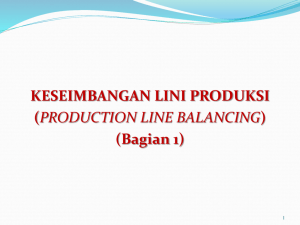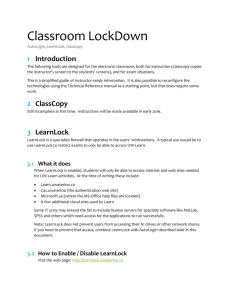6-1
advertisement
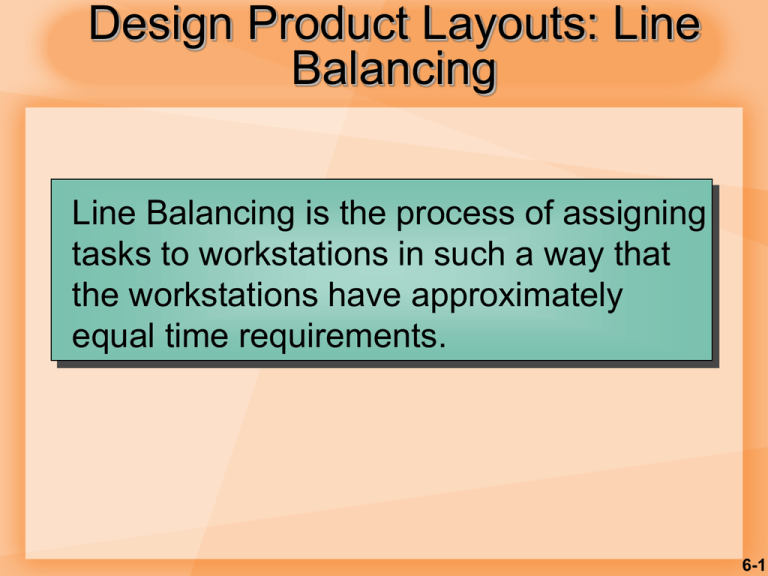
Design Product Layouts: Line Balancing Line Balancing is the process of assigning tasks to workstations in such a way that the workstations have approximately equal time requirements. 6-1 Cycle Time Cycle time is the maximum time allowed at each workstation to complete its set of tasks on a unit. 6-2 Determine Maximum Output OT Out put rat e = CT OT operat ingt imeper day D = Desired out put rat e OT CT = cycle t ime= D 6-3 Determine the Minimum Number of Workstations Required N= ( t ) CT t = sum of t ask t ime 6-4 Precedence Diagram Figure 6.11 Precedence diagram: Tool used in line balancing to display elemental tasks and sequence requirements 0.1 min. 1.0 min. a b c 0.7 min. d 0.5 min. A Simple Precedence Diagram e 0.2 min. 6-5 Example 1: Assembly Line Balancing Arrange tasks shown in Figure 6.10 into three workstations. Use a cycle time of 1.0 minute Assign tasks in order of the most number of followers 6-6 Example 1 Solution Eligible Revised Assign Time Task Remaining 1.0 0.9 0.2 a, c c none a c - 0.9 0.2 2 1.0 b b 0.0 3 1.0 0.5 0.3 d e - d e - 0.5 0.3 Time Workstation Remaining 1 Station Idle Time 0.2 0.0 0.3 0.5 6-7 Calculate Percent Idle Time Idle time per cycle Percent idle time = (N)(CT) Efficiency = 1 – Percent idle time 6-8 Line Balancing Rules Some Heuristic (intuitive) Rules: Assign tasks in order of most following tasks. Count the number of tasks that follow Assign tasks in order of greatest positional weight. Positional weight is the sum of each task’s time and the times of all following tasks. 6-9 Example 2 0.2 0.2 0.3 a b e 0.8 0.6 c d f g h 1.0 0.4 0.3 6-10 Solution to Example 2 Station 1 a b Station 2 Station 3 e f c Station 4 g h d 6-11 Bottleneck Workstation 1 min. 30/hr. 1 min. 30/hr. 2 min. 30/hr. 1 min. 30/hr. Bottleneck 6-12 Parallel Workstations 30/hr. 1 min. 60/hr. 2 min. 30/hr. 1 min. 1 min. 60/hr. 30/hr. 2 min. 30/hr. Parallel Workstations 6-13
